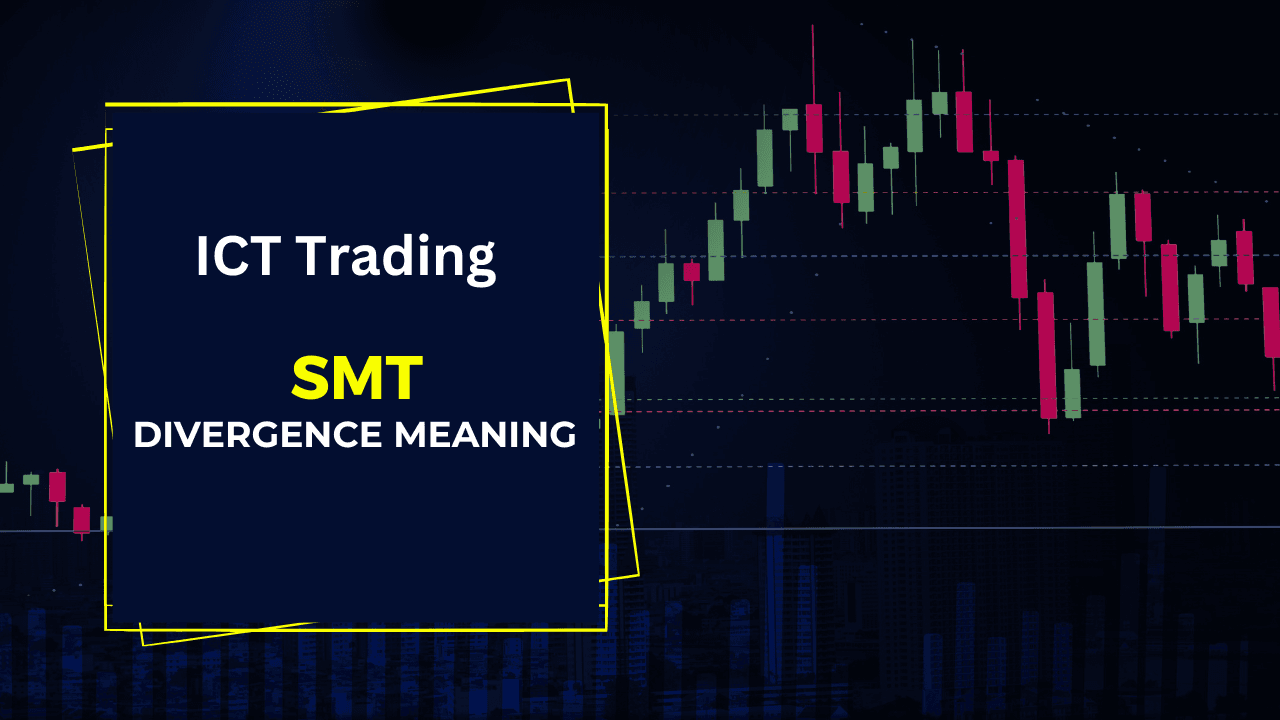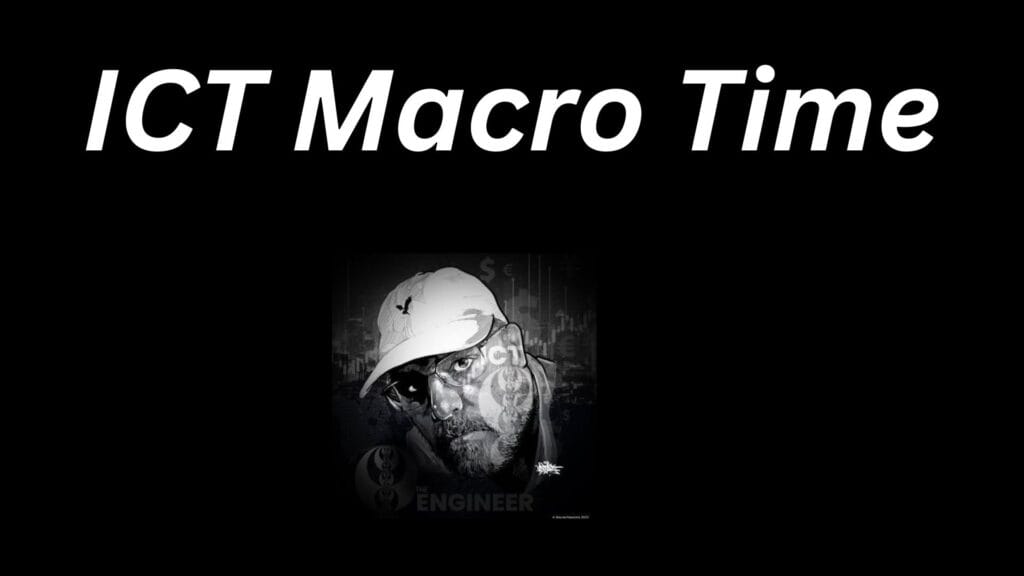SMT divergence, or Smart Money Technique divergence, is a critical concept in the realm of Inner Circle Trading (ICT) that offers traders valuable insights into market dynamics. At its core, SMT divergence helps identify potential price reversals by analyzing discrepancies between price movements and the corresponding action of market makers. Understanding SMT divergence not only enhances a trader’s ability to predict market trends but also provides a strategic edge when making trading decisions. In this article, we will delve into the meaning of SMT divergence, explore its significance within ICT, and outline practical applications to elevate your trading strategies.
What is SMT Divergence?
Definition of SMT Divergence
SMT Divergence refers to a specific market condition that arises when the price of an asset moves in one direction while the underlying market structure or a related asset indicates a different direction. In simpler terms, it highlights a discrepancy between price action and market indicators, particularly involving Smart Money activities. This divergence is crucial for traders as it signals potential reversals or continuation patterns in the market.
In the context of Inner Circle Trading (ICT), understanding SMT divergence means recognizing when the “smart money” or institutional players are making moves that differ from retail traders. This insight can help you position yourself advantageously in the market by aligning with the trends dictated by larger market forces.
How SMT Divergence Works
SMT Divergence operates on the principle that smart money often moves in a way that is not immediately reflected in the price charts. This means that while the price of a currency pair, for example, may be trending upward, certain market indicators or related assets might show signs of weakness. Conversely, when the price appears to be declining, smart money may be accumulating positions, suggesting an impending reversal.
This concept is essential for traders using ICT strategies as it allows them to analyze the market more holistically. By focusing on both price action and smart money movements, traders can make more informed decisions, ultimately improving their trading success.
Types of SMT Divergence
Regular SMT Divergence
Regular SMT Divergence occurs when there is a clear contrast between price movement and the behavior of a related market indicator. For instance, if the price of an asset reaches a new high, but the related market indicator (like an oscillator) does not follow suit, this signals a potential weakening of the upward trend. This type of divergence indicates that the buying pressure might be fading, which could precede a price reversal.
Traders look for this type of divergence to confirm that the market is losing momentum. Recognizing regular SMT Divergence can lead to strategic entries and exits, ensuring that traders align their positions with the market’s true strength.
Hidden SMT Divergence
Hidden SMT Divergence, on the other hand, is often seen as a continuation signal rather than a reversal signal. This occurs when price makes a lower low, but the market indicator makes a higher low. This type of divergence suggests that even though the price has dropped, the underlying market strength is still intact, indicating that the trend may continue.
For example, if a trader observes a hidden SMT Divergence while in an uptrend, it can be an opportune moment to enter the market, as it indicates that the buying interest remains strong. Understanding hidden SMT Divergence allows traders to capitalize on ongoing trends rather than prematurely exiting a position.
Why is SMT Divergence Important in ICT?
Role in Market Analysis
SMT Divergence plays a crucial role in market analysis within the framework of Inner Circle Trading (ICT). Understanding this concept enables traders to assess market conditions more effectively. By identifying divergences between price movements and underlying indicators, traders can gain insights into the actions of smart money.
This insight is vital because smart money often dictates market trends, and recognizing when their activities differ from retail traders can provide valuable clues about potential market reversals or continuations. For example, if the price of a currency pair is increasing but the associated market indicators are showing bearish divergence, it might suggest that institutional traders are not fully supporting the rally, signaling a potential reversal.
Furthermore, SMT Divergence can enhance risk management strategies. By knowing when to anticipate price changes, traders can set better stop-loss orders and position sizes, ultimately leading to more sustainable trading practices.
Enhancing Trading Strategies
Incorporating SMT Divergence into trading strategies allows traders to refine their entry and exit points. By using this analytical tool, traders can increase their probability of success. For instance, when a trader identifies regular SMT divergence while considering a buy order, they might choose to delay their entry until the market shows stronger confirmation of a trend reversal.
Additionally, SMT Divergence can be combined with other ICT techniques, such as market structure analysis and order flow strategies. This synergy can provide a more comprehensive view of the market, empowering traders to make more informed decisions.
In summary, SMT Divergence is essential in ICT because it helps traders understand market dynamics, enhances risk management, and improves the effectiveness of trading strategies.
How to Identify SMT Divergence
Tools and Indicators
Identifying SMT Divergence requires the use of specific tools and indicators that can help traders visualize discrepancies between price action and market behavior. Some commonly used tools include:
- Oscillators: Indicators like the Relative Strength Index (RSI) or the Stochastic Oscillator can be helpful. These tools measure the momentum of price movements and can indicate divergence when price actions and oscillators do not align.
- Volume Analysis: Examining trading volume alongside price movements can provide additional context. Increased volume during a price drop might indicate smart money accumulation, hinting at hidden SMT Divergence.
- Chart Patterns: Recognizing chart patterns such as higher highs or lower lows can also be crucial. Observing price movements relative to these patterns can help traders spot divergence.
Step-by-Step Process
To effectively identify SMT Divergence, follow these steps:
- Select Your Assets: Choose the currency pairs or assets you want to analyze. Ideally, focus on those with significant trading volume and liquidity.
- Use an Oscillator: Apply an oscillator, such as the RSI, to your chart. Look for instances where the price creates a new high or low, but the oscillator does not follow suit.
Look for Divergence:
- Regular Divergence: If the price makes a new high but the oscillator shows a lower high, this indicates regular divergence and suggests a potential reversal.
- Hidden Divergence: If the price makes a lower low but the oscillator indicates a higher low, this points to hidden divergence, suggesting a continuation of the trend.
- Confirm with Volume: Check volume trends to validate your findings. A divergence accompanied by a significant change in volume can strengthen your analysis.
- Combine with Other ICT Tools: Consider using additional ICT strategies to confirm your analysis. Look at market structure and order flow to ensure you have a comprehensive understanding of the market before making a trade.
Practical Applications of SMT Divergence
Trading Strategies Using SMT Divergence
SMT Divergence can significantly enhance your trading strategies when applied correctly. Here are some practical applications to consider:
- Reversal Trading: One of the primary uses of SMT Divergence is to identify potential reversal points in the market. When regular divergence occurs, indicating that price is moving in one direction while an oscillator shows the opposite trend, traders can anticipate a reversal. For instance, if the price of a currency pair is rising but the Relative Strength Index (RSI) is declining, this could signal a potential reversal. Traders might consider entering a sell position at this point, capitalizing on the expected price drop.
- Continuation Trading: Hidden SMT Divergence, which indicates that a prevailing trend is likely to continue, can be used to identify ideal entry points during ongoing trends. If the price makes a higher high but the oscillator shows a lower high, it signals that the upward trend may still have strength. Traders can use this information to enter a buy position, riding the momentum of the continuing trend.
- Confirmation with Additional Indicators: To improve the effectiveness of your trading strategies, consider using SMT Divergence in conjunction with other Inner Circle Trading tools. For example, combining divergence analysis with support and resistance levels can enhance your decision-making process. If SMT Divergence signals a potential reversal near a resistance level, it reinforces the likelihood of a price reversal.
- Risk Management: Incorporating SMT Divergence into your risk management strategies is crucial. By identifying divergence early, traders can set tighter stop-loss orders. If the market shows divergence against their position, it may be a sign to exit the trade to minimize losses. This proactive approach can help preserve capital and enhance long-term trading success.
- Diverse Market Application: SMT Divergence is not limited to forex trading; it can also be applied to various markets, including stocks, commodities, and cryptocurrencies. Regardless of the asset, the principles of divergence remain consistent, allowing traders to adapt this analysis to different trading environments.
Conclusion
In summary, SMT Divergence is a powerful analytical tool within the Inner Circle Trading (ICT) framework. Understanding its meaning and recognizing its importance in market analysis can significantly enhance a trader’s ability to make informed decisions. By identifying both regular and hidden SMT Divergence, traders can pinpoint potential market reversals or continuations, aligning their strategies with smart money movements.
The practical applications of SMT Divergence extend across various trading strategies, enabling traders to improve their entry and exit points, manage risks effectively, and adapt to different market conditions. By integrating SMT Divergence with other ICT techniques, traders can create a robust trading plan that increases their chances of success.
As you navigate the complexities of the market, remember that recognizing and understanding SMT Divergence can provide you with the edge you need. By implementing these strategies and techniques, you can position yourself for greater trading success.
Read More Buy Side Liquidity in ICT Trading
frequently asked question
What is the difference between SMT Divergence and regular divergence?
SMT Divergence specifically focuses on the discrepancies between the price action of an asset and the actions of smart money or market makers, while regular divergence typically refers to the general difference between price movements and oscillators or indicators. In essence, SMT Divergence emphasizes the involvement of institutional traders, making it a more targeted approach to analyzing market behavior compared to regular divergence, which can be identified using any technical indicator.
What are some common mistakes to avoid with SMT Divergence?
When using SMT Divergence, traders should be cautious of the following common mistakes:
- Ignoring Confirmation: Relying solely on SMT Divergence without confirming it with other indicators or market analysis can lead to false signals. Always look for additional evidence to support your trading decisions.
- Overtrading: Traders may be tempted to act on every divergence signal they observe. It’s essential to be selective and only enter trades that align with your overall strategy and risk management rules.
- Neglecting Market Context: Failing to consider the broader market context, such as news events or economic indicators, can lead to poor trading decisions. Always evaluate the overall market environment when interpreting SMT Divergence signals.
- Not Managing Risk: Even with SMT Divergence, there are no guarantees in trading. Implementing effective risk management strategies, such as setting stop-loss orders, is crucial to protect your capital.
How can I practice identifying SMT Divergence?
To practice identifying SMT Divergence, consider the following steps:
- Use Historical Charts: Review historical price charts and apply oscillators like RSI or Stochastic to identify past instances of divergence. This will help you understand how to recognize these patterns in real-time.
- Demo Trading: Utilize demo accounts to practice identifying SMT Divergence in live market conditions without risking real money. This hands-on experience will build your confidence and skills.
- Join Trading Communities: Engage with online trading communities or forums where traders discuss SMT Divergence. Sharing insights and learning from others can enhance your understanding and proficiency in recognizing this concept.
- Take Online Courses: Consider enrolling in courses focused on technical analysis or Inner Circle Trading strategies. These resources can provide valuable information and practice opportunities to help you master SMT Divergence.
Can SMT Divergence be used for all trading styles?
Yes, SMT Divergence can be utilized across various trading styles, including day trading, swing trading, and long-term investing. Its principles apply to different time frames and markets, making it a versatile tool for traders looking to gain insights into market trends and reversals. However, traders should always adapt their strategies to suit their specific trading style and risk tolerance.


